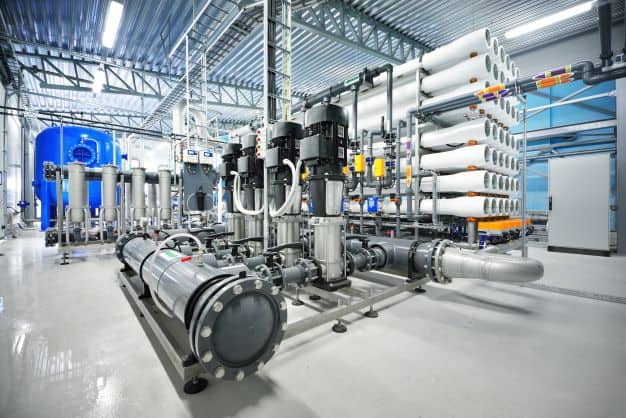How is Ethanol Made and Advantages and Disadvantages of Ethanol Fuel

Overdependence on fossils fuels has led to a hail of environmental problems the universe faces today such as climate change, oil spills, air pollution, and acid rains. Burning of fossils fuels to generate electricity releases dangerous greenhouse gasses like carbon dioxide, nitrous oxide, water vapor, methane, and fluorinated gasses that cause the greenhouse effect. For this reason, most governments are focusing on green and renewable sources of energy to arrest this situation. Ethanol energy is one such green and renewable energy alternative.
Ethanol energy is a type of biofuel derived from corn and other plant materials. It’s a renewable source of energy because, unlike the limited fossil fuel reserves, the plant materials used to produce it can be grown through time and the byproducts of its combustion, for example, carbon dioxide and water are utilized during the process of photosynthesis. It is also green because it doesn’t release dangerous greenhouse gasses to the environment. Nonetheless, you should know that fossil fuels are used in the production of ethanol to burn the mash during distillation.
How is Ethanol Made?
Ethanol can come from things that grow or cellulose materials, for example, starchy crops (corn, sorghum, and barley), sweet crops (sugarcane, citrus, and sugar beets) and plant materials (switchgrass and wood pulp). Ethanol is produced by fermentation and distillation. It begins with crushing the plant materials into tiny particles and grinding the starch into a fine powder. Water is then added to the finely ground powder to obtain a mash.
A special enzyme called alpha amylase is incorporated in the mash to break down the starch into minute particles. The mixture is then subjected to heat, and when the boiling point is reached, the heat is reduced for the mixture to simmer. The heat is increased again to break down more starch. The mixture is then taken off the heat to cool a little bit. A second enzyme known as glucoamylase, which helps to convert liquid starch to sugar, is incorporated.
Fermentation
In the fermentation stage, yeast is added to the mixture. This is the part where sugar is converted to ethanol. The natural carbon dioxide is also separated at this point. The fermentation process takes at least 3 days or 1 week tops. When the fermentation period is over, the mixture will contain 10% ethanol. The fun apart is extracting the ethanol from the mixture.
At this time, you must have the equipment to harness the vapor. Place the mixture on a source of heat and crank up the heat. The ethanol will start to vaporize. Harness the vapor in a separate container. Cool and condense the vaporized ethanol to liquid form. Purify the ethanol by eradicating any water left to obtain pure ethanol.
Denaturing
Pure ethanol is finally denatured to obtain energy fuel. To denature the pure ethanol, add a tiny amount of gasoline between 2 to 5%. Denaturing is needed for all pure grade ethanol. The leftover mash is never wasted. It is a very nutritious animal feed. The ethanol fuel produced is disseminated to the market, particularly, to fuel stations and private distributors.
The kinds of ethanol fuel you’ll stumble across at the fuel pump include E10, which is a blend containing 10% ethanol and can be utilized in cars manufactured from 1980, and E85, which is a blend containing 85% ethanol, and can be used to power modern vehicles on the road.
Advantages of ethanol fuel
Ethanol is a renewable energy resource
Ethanol is derived from plant materials such as corn, sugarcane, and switchgrass. All these are crops that can be grown. Anything that can grow is classified as renewable, which qualifies ethanol fuel as a renewable energy source. Fossil fuels like oil, gas, and coal come from fossils, which means they will run out eventually, so they are not classified as renewable energy.
Fewer greenhouse emissions
Compared to fossil fuels that produce a whole lot of greenhouse gas emissions, ethanol fuel only produces carbon dioxide, but in a very small quantity that does not impact the environment. Ethanol-fueled vehicles emit less carbon dioxide, carbon monoxide, oxides of nitrogen emissions, and hydrocarbons.
It’s a remarkable cleaning agent
Ethanol is classified as a solvent. A solvent is a substance that can wash away dirt, which means it can clean your car engine making it last longer. It will also save you money. Regular engine maintenance can significantly drain your capital reserves.
Adds green jobs to the economy
Embracing ethanol fuel has the potential to add jobs to any country’s economy. For example, statistics project that ethanol fuel would cut U.S. trade deficit by approximately $34.1 billion in the next few years. Beefing up ethanol use is projected to create a little over 50, 000 green jobs.
Widely available and easy to use
Over the recent years, an influx of flexible fuel vehicles that are able to utilize E85 has been witnessed. Auto manufacturers have gotten to grips with the demand for ethanol fuel and responded in kind by manufacturing these kinds of vehicles. The flexibility of these vehicles has given car owners the flexibility to choose between E85 and gasoline, or a combination of both. This has driven up the production of ethanol fuel, and right now, if you drive to any fuel station, you won’t miss ethanol fuel.
Reduces overdependence on fossil fuels
Since ethanol is produced domestically, and from domestically grown plant materials, it minimizes a country’s overreliance on fossils fuels like oil and natural gas.
Lower capital cost to produce
Production of ethanol fuel is relatively cheap. In fact, most of the ethanol in the world is produced right at home. Even the equipment used for large scale production of ethanol is not expensive; hence, the production makes economic sense.
Production of alcoholic beverages
The ethanol produced can also be used to produce alcoholic beverages. For example, spirits like gin, vodka, and whiskey are obtained by distilling a mash of grain such as corn, rye, barley, and wheat. Rums are distilled from sugarcane juice. This alternative brings immense benefits to the distiller.
Disadvantages of Ethanol Fuel
Requires a lot of farmland
Producing plant-based ethanol requires acres of land to be able to fulfill the growing demand. It can be quite challenging if you don’t have that kind of land. Renting land can be an option, but renting acres of land can only add up to the cost of ethanol production.
Uses of fossil fuels
Although ethanol is a renewable and green energy resource, the distillation process uses heat from fossils fuels. We all know that fossil fuels contribute mightily to greenhouse gas emissions. Also, the production of ethanol may take more fuel, which can affect the pricing of ethanol fuel.
Ethanol energy is relatively expensive
With fossil fuels, we only need to drill initially, and that’s it. Drilling is not that costly. To obtain the final ethanol energy, you have to go through a lot of processes including growing (which could take months), fermenting, distilling, and transportation. The entire process could prove costly, which would eventually drive up the cost of ethanol fuel. Growing these crops also needs a lot of water, especially, in countries that do not receive sufficient rainfall. This will also add up to the cost of ethanol fuel.
Hard to scale up ethanol blends
Most of the cars right now can only handle 10-15% ethanol blends. To handle more than that would require engine modification, which could be a big logistical challenge for any country. It would be very expensive to change all car engines to be able to accommodate more than 10-15% ethanol blend.






